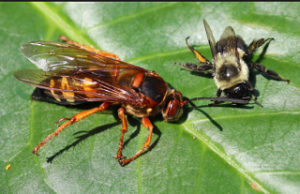
Cicadas, bees and nets
It was studying the cris-cris of the cicadas in flocks, which are synchronized that Duncan Watts decided to study nets and found the adviser Donald Strogatz and began to study nets, the phenomena of the small worlds and the six degrees of separation, Duncan’s doctoral thesis which later became an article was “The structure and dynamics of the small-world system” (1997).
to study nets and found the adviser Donald Strogatz and began to study nets, the phenomena of the small worlds and the six degrees of separation, Duncan’s doctoral thesis which later became an article was “The structure and dynamics of the small-world system” (1997).
The study was a success and to this day the article is one of the most read in studies of Social Networks.
But now we have a reverse case, the bees seem to gradually lose their strength and as polemizers of nature their threat of extinction begins to worry ecologists, researchers and now also researchers in Computing.
A study being developed by the University of Exeter in the UK seeks to create a “safe virtual space” for the threats faced by bees, creating a computational model of bee population dynamics in response to variables such as pesticides, parasites and loss of habitat.
The predictive tool called Bumble-BEEHAVE was developed by Grace Twiston-Davies to be a “free and easy to use system” that “takes into account the many complicated factors that interact to affect the drones.
The + result and a secure virtual space to test different management options, this model can test “six British bee species in an environment that has multiple sources of nectar and pollen.”
“Simulation allows researchers to understand the individual and interactive effects of multiple stressors that affect the survival of the bumblebee and feedback mechanisms that can protect a colony against environmental stress that can lead to collapse,” said Juliet Osborne of Exeter. the spiral colony. ”
Seeing in Portugal the amount of pollen in the air, which causes many respiratory diseases, I began to think about this serious problem that can affect the whole of nature.









